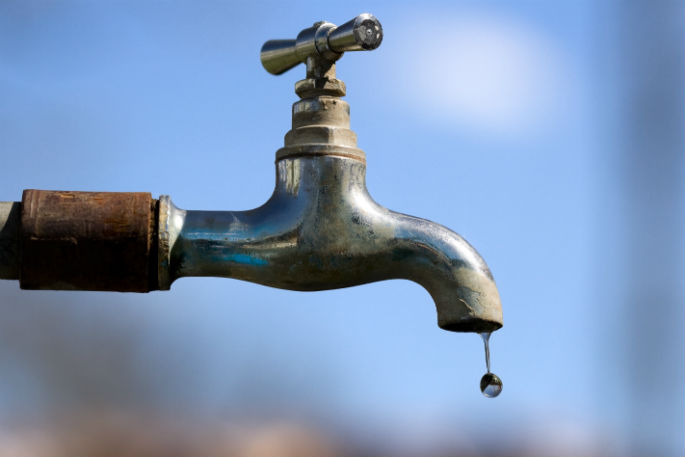Thames Coromandel District Council mayor Sandra Goudie is talking down water supply checks that find fault with some of the council's water supplies.
The key findings of the NZ Drinking Water Standards Compliance report 2016-17 for the Thames-Coromandel District are that water supplies for Thames Valley/Matatoki, Onemana, Whangamata, and Coromandel Town are non-complying for Part 4 of the Drinking water standards around bacteria (E.coli).
The water supplies for Thames, Matarangi, Whitianga, Hahei, Tairua, Pauanui comply with the drinking water standards around E.coli bacteria.
"The fact is some of our treatment plants and distribution zones didn't reach overall compliance for a variety of different reasons,” says Sandra.
'If we test every minute but we miss a minute then we're said to be non-compliant. And that is in spite of what the water quality is.
'We're already being proactive about what we need to do as a Council towards improvements, as well as budgeting in our upcoming 2018-2028 Long Term Plan towards increased monitoring and compliance.
'But if Government is going to continue to alter the standards to such a level that they're becoming ridiculous to meet, and putting an unnecessary burden on costs for local authorities, then they need to come to the party," says Sandra.
The Government asking Councils to check the water being supplied to residents following the 2016 gastro outbreak in Havelock north which is liked to four deaths.
The ramifications for councils like the Thames Coromandel District Council is they will spend more on compliance, monitoring and infrastructure, which will be a cost ratepayers., says Sandra.
The TCDC manages nine urban and two rural, the Thames Valley/Matatoki water supply schemes. In the latest "NZ Drinking Water Standards Compliance Report 2016-17," six of the 11 supplies met overall compliance for part 4 bacteria monitoring, while none of the supplies met overall compliance for part 5 protozoal monitoring of the Drinking Water Standards.
"We need to provide some context around these findings," says TCDC infrastructure manager Bruce Hinson.
"In many cases, failures were down to just one small measurement not being taken or met. Our records show that we have had zero instances of sickness reported to the Ministry of Health about our drinking water," says Bruce.
"Works in the past year towards improvements to meet the Drinking Water Standards have been underway. And between $15M and $30M is proposed in our next Long Term Plan 2018-2028, to pay for infrastructure, monitoring and data collection to improve our compliance."
This includes chlorination of both the Hahei and Pauanui supplies, the only urban water schemes left in Thames-Coromandel District unchlorinated.
The current UV disinfection at the plants is effective in killing micro-organisms that can cause illness, there is no guarantee that it remains effective throughout the reticulation, says Bruce.
Once water passes through the UV disinfection unit it no longer has any residual protection and can become contaminated. Chlorine stays in the water throughout its journey to the tap killing any harmful micro-organisms along the way.
Within the Thames Valley network, pipe installation work is already underway and programmed for completion in 2021/22.
In Whangamata system optimisation work has been scoped, with the optimised use of storage capacity completed by June 2018.
Meanwhile no drinking water sources met overall compliance for Part 5 protozoa, giardia/cryptosporidium.
• In Coromandel Town and Tairua, failure is down to not meeting one bacteria (e-coli) measurement, as the contractor couldn't access either of the areas within the allocated timeframe, due to road closures during an extreme weather event.
• At other sources, there were relatively minor breaches in the allowable turbidity - lack of clarity/sediment levels in the water for short periods.
'This was because we were unable to obtain the required consistent time-stamped readings during the allocated time to meet the Drinking Water Standards,” says Bruce.
•The schemes in Matatoki and the Thames Valley are rural supplies used primarily for stock, and have never met Drinking Water Standards.
'For many years now, we've been advising any households who choose to use this water to install point-of-entry household treatment systems (UV systems) or to boil for potable water use,” says Bruce.
More can be read on how the TCDC manages those supplies on the website.
•There has only been one occasion in the past five years when a boil water notice was issued within the District and that was in March 2016 in the Coromandel Town supply, says Bruce. A malfunction at the treatment plant caused an increase in turbidity, which breached the limits for public drinking water supplies. In those three days where the boil water notice was in place, the TCDC provided bottled water to the schools, kindergartens and medical facilities.
The main recommendations from the compliance report are:
• Provide catchment risk assessments for Hahei and Thames Valley (Omahu, Puriri and Matatoki) water sources.
• Provide validation (up to date certification) of the UV water filter supply units in use.
• Provide clarification on what I.T systems the Council plans to use to collect and store monitoring for protozoa compliance.
• Provide clarification on what the Council plans to do about non-treated and unmonitored water supplies.
• Radiological testing of groundwater sources by the end of 2018. Radiologic compliance is another requirement of the Drinking Water Standards where ground water has to be analysed for radioactivity every five years and surface water every ten years.
• A Water Safety Compliance report for Whangamata submitted by the end of 2017.



1 comment
TCDC non compliant water
Posted on 09-12-2017 11:24 | By tia
Here we go again. Another politician trying to justify why the water doesn't comply and protecting votes. Don't blame the contractor for not being able to gain access. If your plants do not have continuous monitoring you are bound to fail.
Leave a Comment
You must be logged in to make a comment.